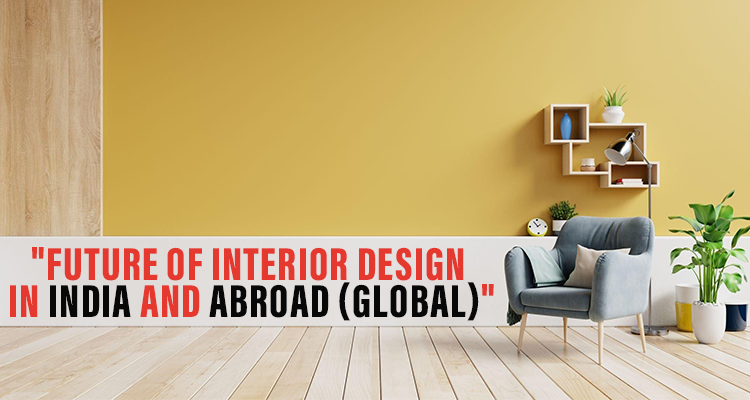
Future of Interior design in INDIA & Abroad
Interior design is transforming society by combining aesthetics, functionality, and creativity. India’s future combines tradition and modernity, incorporating vibrant colours, intricate patterns, and artisanal craftsmanship. Sustainable practices, eco-friendly materials, and local materials are becoming prominent features. The global interior design scene is also undergoing transformation, drawing inspiration from diverse regions. Technology is revolutionizing communication and collaboration, with virtual reality, augmented reality, and advanced visualization tools enhancing collaboration. Sustainability and well-being are driving the future of interior design.
The Future Impact of Technology on Interior Design:
Smart homes are revolutionizing living spaces with interconnected devices and sensors, offering convenience, efficiency, and personalized experiences. The Internet of Things (IoT) serves as the backbone of smart homes, connecting devices and enabling communication. Virtual Reality and Augmented Reality are transforming interior design, allowing designers and clients to visualize spaces before construction. IoT creates connected ecosystems, enhancing functionality, comfort, and efficiency. Smart lighting, heating, cooling, and appliances provide real-time updates, while IoT devices improve safety and security, simplifying future daily routines and improving the overall quality of life, and it will become easy because of smart interior design.
Sustainability and Eco-friendly Design:
The interior design industry is adopting sustainable and eco-friendly practices, such as energy-efficient lighting, insulation, renewable energy, and water conservation. The biophilic design mimics natural settings, promoting well-being, productivity, and stress reduction. Designers use eco-friendly materials, techniques, and certifications to create visually appealing spaces while reducing carbon footprints and improving indoor air quality.
Cultural Fusion:
Interior design has evolved from local influences to a global phenomenon, blending diverse cultural influences to create unique spaces. This fusion of traditional and contemporary styles celebrates heritage while embracing modernity, creating timeless and relevant spaces. Cultural fusion in interior design celebrates cultural traditions while adapting them to modern living preferences. By integrating traditional architectural elements and patterns, designers create authentic, meaningful spaces reflecting the interconnected world. This cross-cultural exchange shapes design trends, inspiring designers to blend traditional and contemporary styles and showcase unique design elements from different regions.
Functional and Adaptive Spaces:
Urban populations are increasing, and interior design is adapting to accommodate compact living. Designers focus on functionality, efficiency, and style without sacrificing comfort. They use intelligent space planning, open floor plans, modular furniture, and built-in storage. Multifunctional furniture contributes to a sustainable lifestyle and aging-in-place design, making spaces accessible, safe, and comfortable for all ages and abilities. By embracing innovative space planning, versatile furniture, and inclusive design principles, designers create functional, stylish, and age-friendly spaces that support modern living dynamics.
Wellness and Well-being:
Interior design is focusing on mental and emotional well-being through mindful principles, incorporating nature-inspired motifs, soothing colours, and natural materials. Designers prioritize air quality, natural lighting, and acoustic comfort to create healthy indoor environments. Wellness-centric spaces, such as meditation nooks, relaxation zones, yoga areas, and spa-like bathrooms, promote relaxation, meditation, and self-care practices, contributing to a healthier lifestyle.
Art and Technology Integration:
Digital art installations and 3D printing revolutionize interior design by blending traditional art forms with digital innovation. These installations, like projection mapping, LED displays, and interactive screens, create unique visual experiences and evoke emotions. 3D printing and digital art installations enable designers to create bespoke furniture and decor items, while lighting has evolved from a crucial aspect to an art form, incorporating dynamic systems, colour-changing LEDs, and programmable fixtures. These innovative lighting schemes are visually appealing and environmentally friendly, transforming spaces and fostering creativity.
Conclusion:
The future of interior design in India and abroad is a journey of endless possibilities, integrating technology, sustainability, cultural fusion, and well-being. Technology revolutionizes design, while sustainability and cultural fusion promote well-being. Interconnectedness blends traditional and contemporary elements, celebrating heritage and modernity. Well-being is at the forefront, with mindful design principles promoting relaxation, mindfulness, and self-care.
